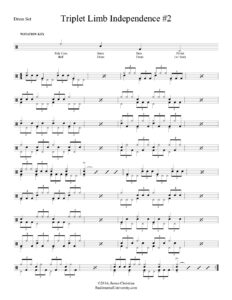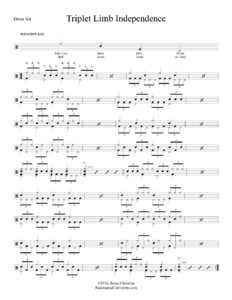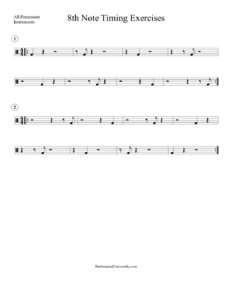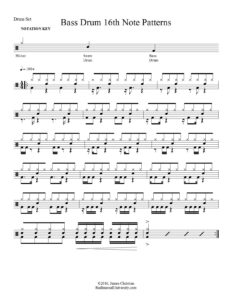
It’s coordination time again! In our last drum set exercise, we focused on different limb combinations with triplets. This week, we take the same concept further and increase the coordinative complexity a bit. (Note: This assumes a traditional kit setup, in which the ride cymbal and bass drum are played with the right hand and right foot respectively, and the snare drum and hi-hat are played with the left hand and left foot respectively. Adjust this exercise to work the same concepts according to your setup.)
Measures 1-2: triplets in left hand and left foot (3 notes each), quarter notes in right hand and right foot (lead with hand)
Measures 3-4: triplets in right hand and right foot (3 notes each), quarter notes in left hand and left foot (lead with hand)
Measures 5-6: triplets in left hand and left foot (3 notes each), quarter notes in right foot and right hand (lead with foot)
Measures 7-8: triplets in right hand and right foot (3 notes each), quarter notes in left foot and left hand (lead with foot)
Measures 9-12: repeats the previous patterns of measures 1-4 with triplets alternating single strokes between limbs
Measures 13-16: repeats measures 9-12, except the order of hand and foot is reversed on the single stroke triplets
Measures 17-18: a “tag” ending to wrap it up
Measures 19-36: the entire exercise repeats with the opposite side leading (right hand becomes left hand and vice versa, right foot becomes left foot and vice versa)
Between this exercise and the previous exercise, just about every combination is covered. If you can play both exercises smoothly and consistently, your coordination will increase significantly.



